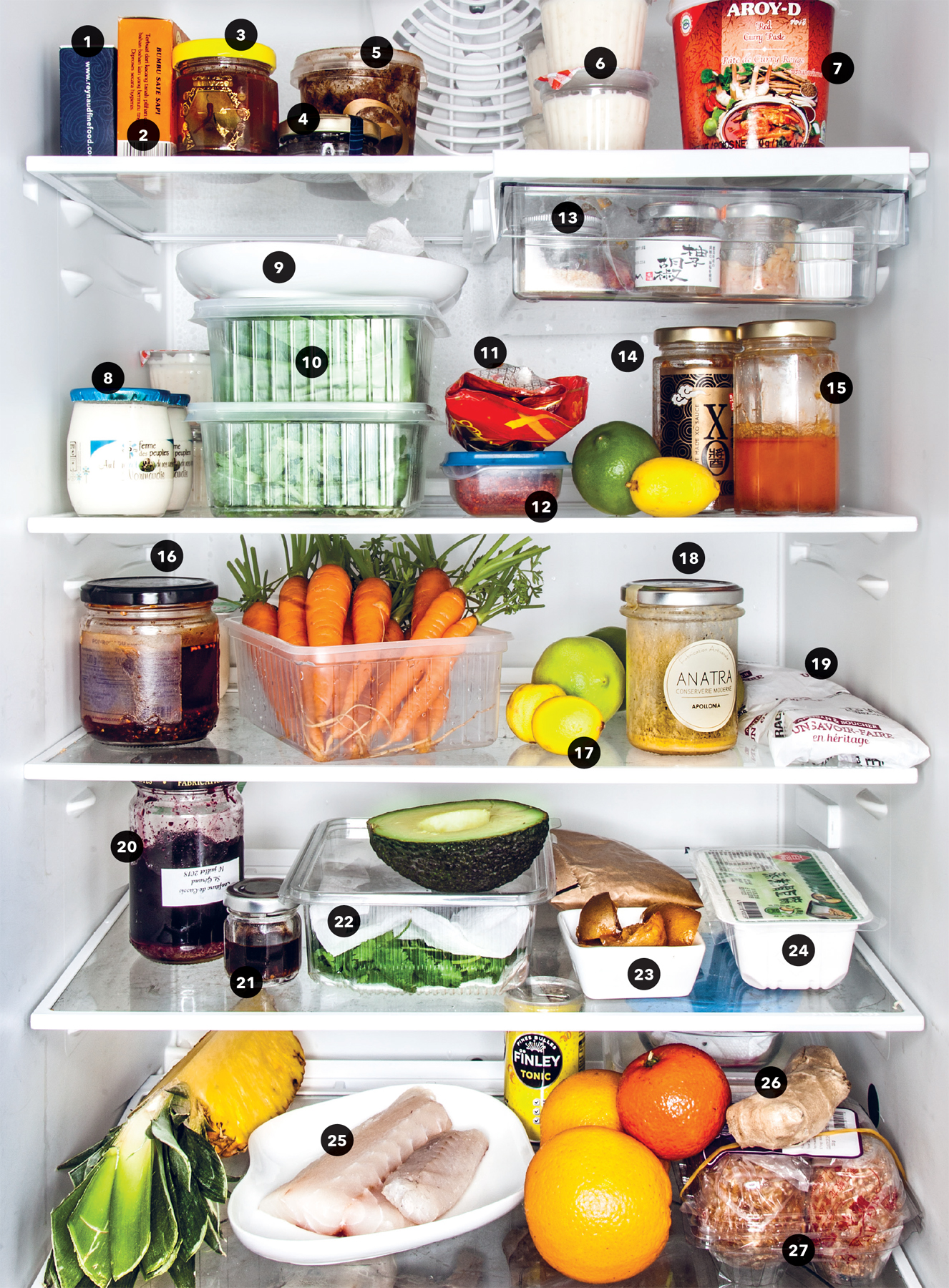Pascal Barbot isn’t just the chef of the Michelin-starred Astrance. He also serves as its culinary mentor, training some of the world’s most celebrated chefs, including Magnus Nilsson, André Chiang, and Adeline Grattard. “When chefs come work for us, they learn not just how to cook, but how to order and meet the producers, run the front of house, and even sometimes how to park a car,” he says. Cooks learn faster by doing everything, Barbot explains.
That hands-on approach came early. Barbot, who’s from Vichy, had a “happy childhood.” His father took him fishing and hunting and he picked vegetables and fruit from the garden, learning quickly that food has its seasons. From the age of ten he was preparing vinaigrettes at his mother’s side and by the time he was a teenager he knew he wanted to cook for a living, even though he knew absolutely nothing about restaurants—and had never eaten in one. When he interviewed at a small cooking school near Vichy, Barbot had to lie to the board about his experiences dining out in order to be accepted, he recalls. Through contacts, he went to London for an apprenticeship at Les Saveurs (“the first Japanese-owned Michelin-starred restaurant in Europe”). There, he tasted such delicacies as caviar and sole for the first time—until then he had never seen fish that didn’t come from a river.
When Barbot was called up for mandatory military service, his horizons expanded again. He became a cook on a French ship that toured the South Pacific. There he encountered Tahitian-style ceviche and such products as chayote, mangoes, and taro, all of which later influenced his own cuisine.
After his tour was over, Barbot furthered his education by working at L’Arpège with legendary chef Alain Passard, eventually running the kitchen and becoming friends with his future business partner, Christophe Rohat, and then going to Australia for two years to cook there. The laid-back Australian attitude made an impression on Barbot, and helped him realize that he wouldn’t need such things as a maître d’ or sommelier if he ever opened his own place.
Back in Paris, after a change in ownership jeopardized his chances to work as the head chef at the newly reopened restaurant Lapérouse, Barbot and Rohat decided to open their own place. “Better to own your own small place and be happy than unhappy running someone else’s big business,” Barbot explains.
Although they didn’t have much money, friends and family pitched in, as did former mentor Alain Passard, who provided the Rolodex of his best clients. Astrance opened in the year 2000.
From the beginning, Astrance was different. Because the restaurant could fit only twenty diners at a time and the staff was small, Barbot decided to do away with the classic menu and focus instead on the freshest, most seasonal ingredients that his producers delivered each morning. By letting the producers decide what to bring, there was very little waste—the restaurant’s refrigerators were left completely empty at the end of each evening. The result: iconic dishes such as mushroom and foie gras millefeuille marinated in verjus, and John Dory flavored with curry, mango, and papaya.

CURRENT HOMETOWN: Paris, France
RESTAURANT THAT MADE HIS NAME: Astrance, Paris
SIGNATURE STYLE: Classic French cuisine with an Asian twist
BEST KNOWN FOR: His three-Michelin-star restaurant; making the World’s 50 Best Restaurants list multiple times; and his menu that changes each morning based on his deliveries
FRIDGE: Seimens
Barbot had found his style: French technique married to local products, inspired by the dishes he had tasted on his travels. No one had seen cooking like this in Paris before, and Astrance got its first star less than a year after it opened—and its third seven years later.
“It’s funny everyone always calls my cooking fusion cuisine,” says Barbot. “I’m not a fusion chef, whatever that means. It’s just my education, the fact that I traveled to New Caledonia, Fiji, and Tahiti when I was young. There are lots of French territories out there that, because of history, there is a mix of different styles and cultures—for them it’s completely normal.”
That mix of cultures also comes into play when Barbot cooks at home in his kitchen that overlooks his rooftop vegetable garden—as well as the rooftops of Paris. While he rarely eats there when the restaurant is open, on his days off, meals consist of fresh ingredients amped up by his well-chosen stock of condiments. But whether he’s eating tomatoes and eggs or steamed rouget and seasonal veggies, there is always something sweet or spicy thrown in.

- REYNAUD FINE FOOD SARDINES
- BUMBU SATE—“My girlfriend loves this!”
- CHILI PASTE
- REYNAUD FINE FOOD CAVIAR
- COCONUT SUGAR, to use with soy sauce to marinate different proteins
- BONNE MAMAN RICE PUDDING—“I eat this in between lunch and dinner service.”
- AROY-D RED CURRY PASTE—“I mix this with coconut milk and combava (Kaffir lime) and use it to marinate shrimp.”
- FERME DES PEUPLIERS YOGURT
- CHICKEN BREASTS
- SALAD—“This is an example of mise en place that I do at home. I always wash, dry, and box up my salads so that they are ready to use.”
- DRIED SCALLOPS
- CHILI FLAKES
- SESAME SEEDS, YUZU KOSHO, FERMENTED SHRIMP, COFFEE CREAMERS
- XO SAUCE
- SHELLFISH OIL, left over from making XO sauce
- EL NAVARRICO CHILI OIL—“From one of my chefs who wanted me to taste it.”
- FRESH YUZU
- ANATRA APOLLONIA (PEAR, PINEAPPLE, AND PASSION BERRY) JAM
- HAM
- BLACK CURRANT JAM—“My mom made it for me.”
- SOY SAUCE
- CILANTRO
- CHILI PEPPER PRESERVED LEMONS
- TOFU
- SEA BASS FILLET, for ceviche
- GINGER
- HUNDRED-YEAR-OLD EGGS—“A friend brings these back from China. We eat them in a salad with tofu and vegetables.”